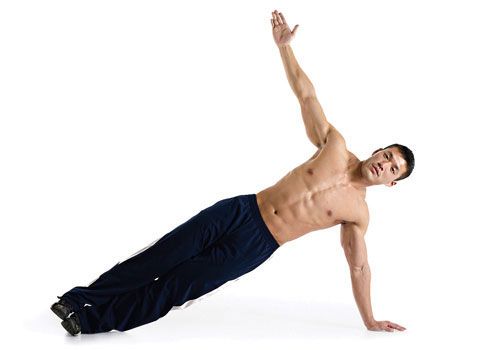Medical expert of the article
New publications
Types of push-ups
Last reviewed: 08.07.2025

All iLive content is medically reviewed or fact checked to ensure as much factual accuracy as possible.
We have strict sourcing guidelines and only link to reputable media sites, academic research institutions and, whenever possible, medically peer reviewed studies. Note that the numbers in parentheses ([1], [2], etc.) are clickable links to these studies.
If you feel that any of our content is inaccurate, out-of-date, or otherwise questionable, please select it and press Ctrl + Enter.

- Classic push-ups
Good for: General fitness Balance your body on your toes and palms, keeping your hands a comfortable distance apart, perhaps a little wider than shoulder width. Straighten your back, tighten your pelvic muscles (as described above). Slowly lower yourself to the floor and push yourself up to the top position. Repeat several hundred times.
Variations: Three-legged push-ups (cross one leg over the other; this makes the exercise more challenging); chair push-ups (place your feet on a bench or chair; this makes the exercise even more challenging); triceps push-ups (place your hands close together, with your thumbs and index fingers touching; shift the weight from your chest to your arms).
- Push-ups with twists
Useful for: Sports that involve rotation of the torso, such as tennis, hockey, and baseball
Get into a classic push-up position, but as you come up, twist your body so that your right arm goes up and straightens over your head. Your arms and torso should form a T. Return to the starting position, lower yourself down, then push yourself back up and twist, this time lifting your left arm.
Variations: Single-dumbbell twist push-ups (hold a dumbbell in one hand; hold the dumbbell in one hand for half the set, then switch to the other hand); double-dumbbell twist push-ups (hold dumbbells in both hands, and switch sides as you lift your body up).

- Plank
Good for: Posture; core strength and stability
Lying on your stomach, supporting yourself on your forearms and toes, tense your thigh muscles and hold your body in a straight line from your ankles to your shoulders for 5 seconds. Do 10 reps of 5 seconds.
Variations: If you can hold the plank easily for 5 seconds, do it longer until you reach 30 seconds. Then try resting on your knuckles.


